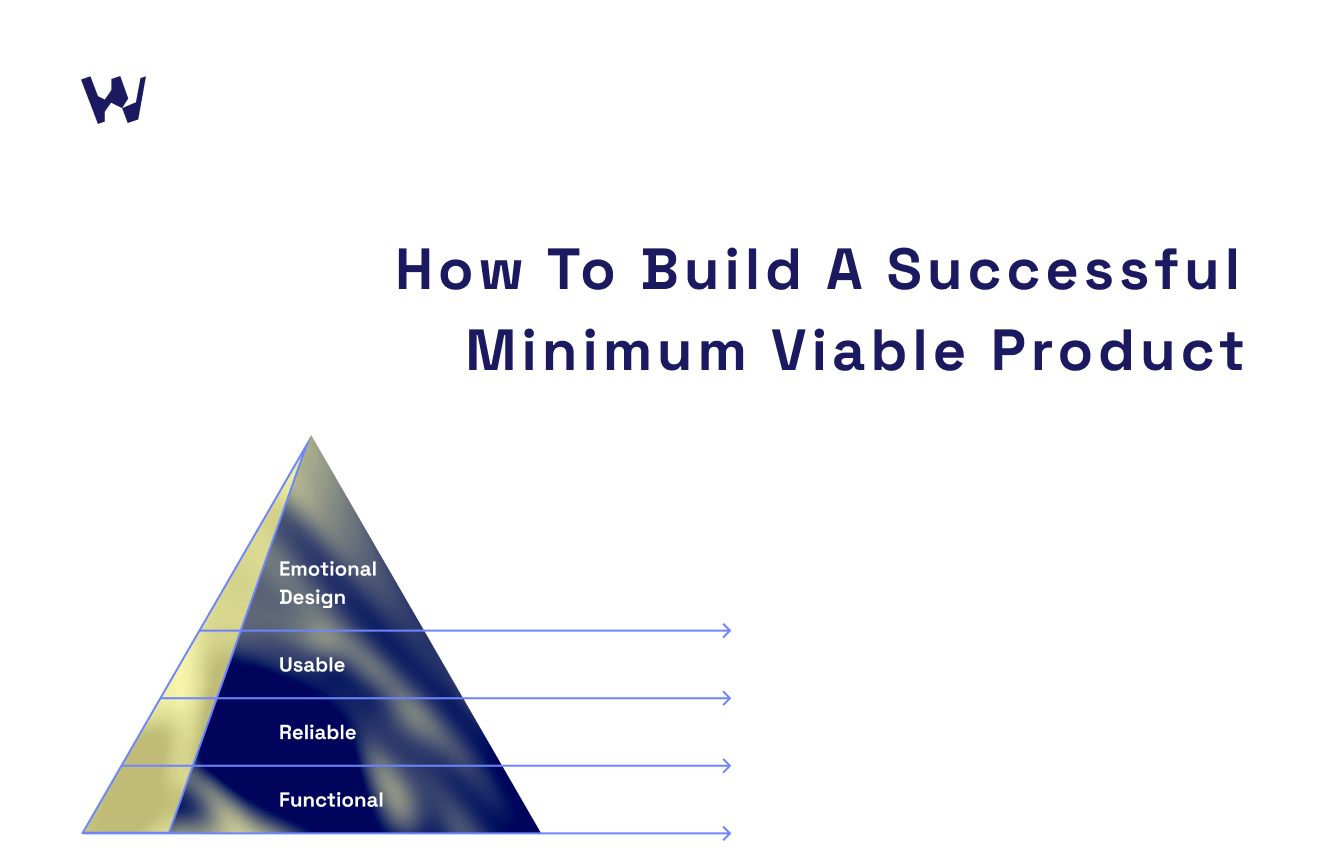How To Build A Successful Minimum Viable Product in 2023

A minimum viable product is an indispensable part of your end-product release. A successful startup MVP, if crafted correctly, will bring you valuable feedback from your actual users before the product is even developed.
However, you don’t necessarily have to be an expert in minimum viable products to build a striking one. This article prepared based on the Webmil team’s vast knowledge will guide you through every core step of MVP development and the most crucial nuances.
What is the MVP?
An MVP is the simplest version of your product that allows you to start the learning process with the least effort. Unlike a full-blown product, the MVP focuses on the most crucial features aimed to make it functional.
The goal of MVP is to let your start-up build a product that is relevant, demanded, and utterly problem-solving, based on the testimonials gathered from the real targeted users.
How to build MVP: 6 core steps
How to create an MVP that will result in a booming product that hits the spot? Throughout the 12 years of our company’s existence, we have followed the simple 6-step roadmap that we are willing to share with you right now.
Define the audience and the problem
Your MVP’s success begins by knowing who it's for. Many entrepreneurs fail neglecting their customers’ real needs. Who are your ideal users? What are their daily challenges? Dive deep, understand their needs, and you'll have a clearer direction.
It's tempting to solve every problem, but you have to pinpoint the primary issue your product addresses. Once you have an idea of what problem your MVP solves and for whom, you can move on.
Research the market
The research by CB Insights illustrated that 35% of start-ups fail due to their idea's irrelevance to the market.
You want to clearly estimate how great the competition is in your industry. You also want to find out the market size and the probability for your product to stand out.
An in-depth, cool-headed research will prevent your start-up from money loss while bringing valuable insights.
Develop a clear strategy
Then goes the brainstorming step. Your team has to clearly understand what are your strengths and weaknesses, and the focal point aim. Set up your primary channels of promotion and plan the budget.
List your features
The features of your product have to 100% correlate with what your end-users want to see. Here, your primary concern is to gather the feedback internally and externally, and roadmap your MVP flow according to it.
Craft the prototype
To cut the long story, the prototype lets you envision the end product before you have coded anything.
Neglecting the prototype may lead to pretty much the same result as Steve Jobs’s product Apple Lisa stumbled (a complete failure).
The prototype before the actual MVP will show you whether you are heading in the right direction with your product and whether it’s usable, relevant, and user-friendly.
Test internally and adjust
Give your MVP a proper test before you release it. It will save a load of money and time. Squeeze the maximum feedback from your friends, family, or colleagues who participated in the MVP test and see what has to be iterated.
Common mistakes that kill your MVP
Many start-ups would usually give in due to the lack of funding, commonly related to improper MVP building or market research. These simple questions right before the release of your MVP can save your entire start-up.
- Do you fish in the right pool with the right rod?
You have to be 100% sure that your product has a unique proposition that will outrun your competitors. You also have to be absolutely sure that your product solves the key problems of your targeted audience.
2. Is your product overloaded or underloaded with features?
Excessively loaded with features your product will simply run less user-friendly. People don’t have to watch tutorials on how to use your e-commerce or dating app.
On the other hand, if your product is seriously understaffed with options, there is always a chance to add more features that solve problems your competitors overlooked.
3. Is your product based on the user’s feedback?
There is a whopping amount of start-ups that imagine their ideal user and follow their illusions until the very failure. Your MVP has to be developed and iterated based on the real feedback from people who will be using your product, and not on the alleged assumptions.
Summing up
MVP is the beta test of your product that presents its most essential functions. Gathering feedback from your targeted user and adjusting your product prototype until the targeted user demand is sated is only achievable with the properly launched minimum-viable product.
To build a successful MVP you want to:
- Define your audience and their problems
- Research the market, define the strategy
- List the features, craft the prototype
- Test your MVP within your team before you are going to present it to your audience
A cool-headed approach along with the end user in mind will ensure that your MVP goes over big and singles out of your competitors.
Rely on professionals
Webmil’s qualified developers will build and launch your minimum-viable product based on our 12+ years of experience.
We’ve been aiding numerous startups, for example, Oversecured and companies, growing their sales and brand identities. Let’s get in touch and start planning an MVP for your start-up.